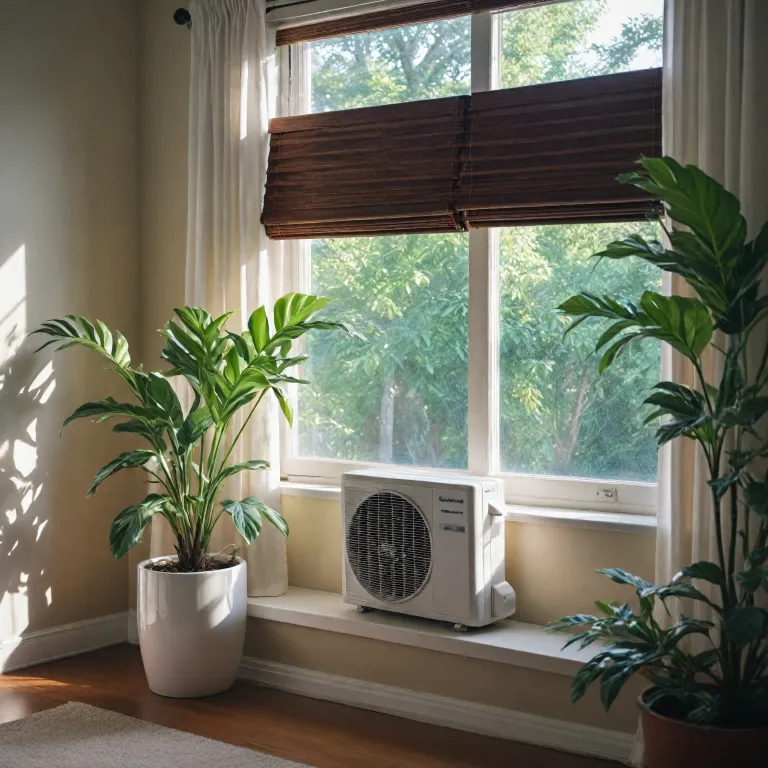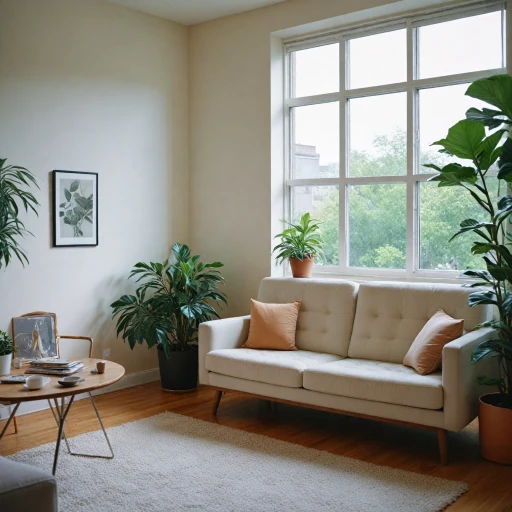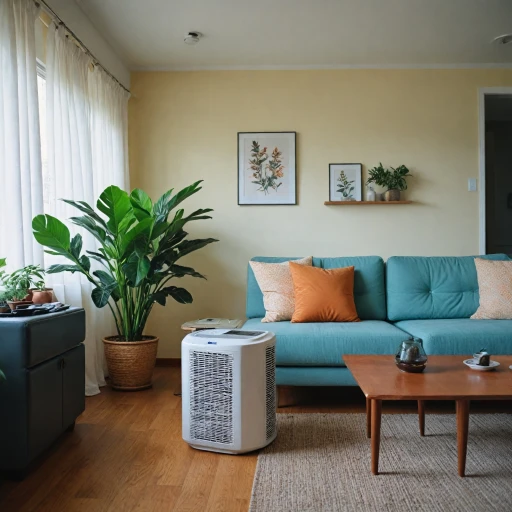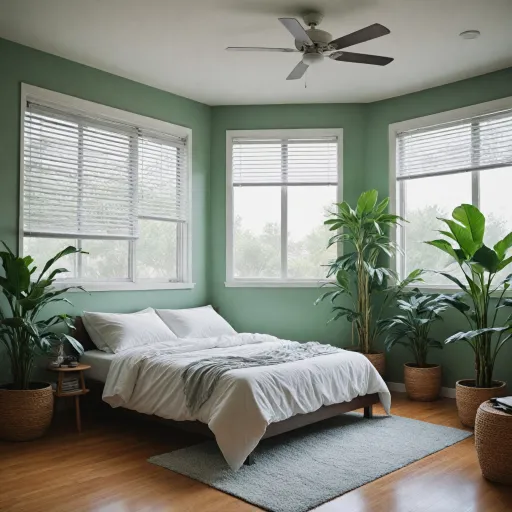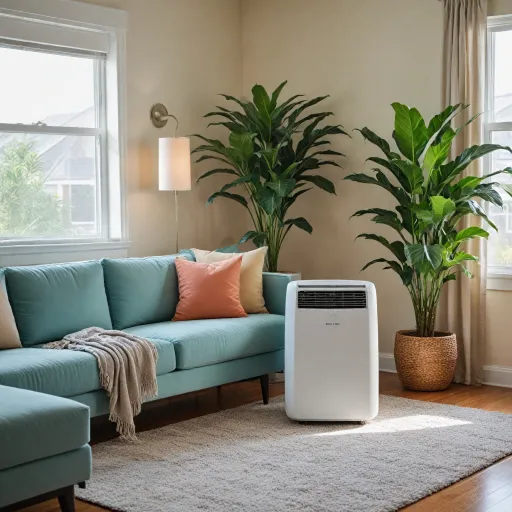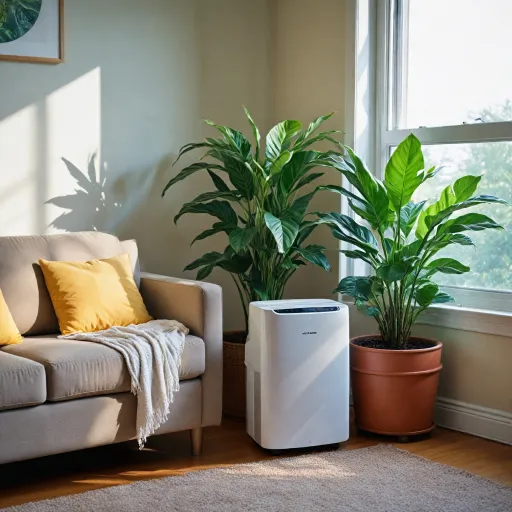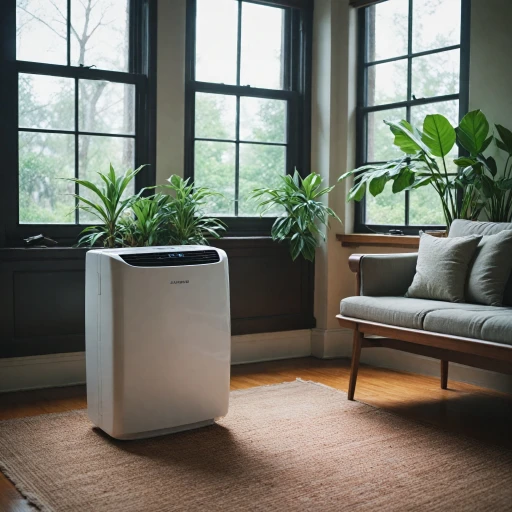
Understanding BTU and Its Importance
Decoding BTU: The Heart of Your Air Conditioning Decision
Selecting a window air conditioner can be a daunting task, especially with numerous units featuring varying BTU ratings. Understanding BTU is crucial as it serves as the measure of cooling power. BTU, or British Thermal Unit, in the context of air conditioning, signifies the amount of heat an air conditioner can remove from a room per hour. When assessing an air conditioning system, it's important to match the BTU rating to the room size to ensure optimal energy efficiency and cooling effectiveness. A 10,000 BTU window unit generally covers areas between 400 to 450 square feet, akin to a small to medium-sized room. This makes it an ideal choice for those spaces, providing the right balance of comfort without excessive energy consumption. The energy star rating often accompanies air conditioners of this BTU range, assuring users of both performance and energy saving capabilities. Moreover, inverter technology in a window air conditioner enhances energy efficiency by adjusting the compressor speed according to the desired room temperature. This feature is particularly advantageous for maintaining consistent comfort while reducing energy costs. Air conditioning products such as those equipped with a BTU inverter offer precise control over your room cooling needs, ultimately contributing to energy conservation. Choosing the appropriate BTU rating extends beyond energy saving benefits; it also impacts the longevity and performance of the unit. Underpowered units will struggle to cool efficiently, running continuously and inflating energy costs. Conversely, overpowered units may cool quickly but lead to unnecessary power usage and frequent on-off cycling, which can reduce the lifespan of the conditioner. Therefore, understanding and selecting the correct BTU rating tailored to your room's square footage lays the groundwork for a comfortable and energy-efficient cooling solution.Benefits of a 10,000 BTU Window Air Conditioner
Advantages of Choosing the Right Size
Purchasing a 10,000 BTU window air conditioner is a smart move for efficiently cooling spaces up to 300-450 square feet. This capacity is ideal for a room of modest to medium size and ensures that the energy consumption is optimized, helping you save energy and reduce your energy bills. By selecting a unit with the appropriate BTU rating, you can avoid both undercooling and overcooling, which lead to unnecessary energy consumption.
Maximizing Cooling and Comfort
A window unit with a remote control provides the ease of adjusting settings from anywhere in the room. Features such as multiple fan speeds and a 24-hour timer allow you to customize your experience according to your schedule and preferences. Look for an inverter air conditioner model that offers energy efficient operation and consistent cooling.
Aesthetic and Functional Considerations
- Design: Sleek styles, such as those in white, can seamlessly blend with your room decor.
- Control: Many modern units come equipped with intuitive remote control options that enhance usability.
- Noise Levels: Choose products known for quiet operation to maintain your peace and comfort.
For those transitioning between portable and window air conditioner options, understanding the benefits of a window unit can help make an informed decision. Shipping options and item details often differ, and it's wise to consider these before purchase. Moreover, some brands offer a warranty shipping free feature for peace of mind.
Efficiency and Reliability
The effectiveness of a BTU inverter window air conditioner is supported by its Energy Star rating, guaranteeing efficient performance. This results in long-term savings and reduced energy consumption, making these models a compelling choice for environmentally conscious consumers.
Installation Tips for Window Air Conditioners
Efficient Cooling Installation Strategies for Window Air Conditioners
Installing a 10,000 BTU window air conditioner efficiently can play a significant role in enhancing your cooling experience. Proper installation not only saves energy but also ensures optimal performance of your air conditioning unit. Here are some essential tips for a hassle-free installation:
- Choosing the Right Window: Opt for a window in the room that offers the best location for airflow. It should provide maximum sunlight blockage to maintain energy efficiency while conditioning the room effectively.
- Measure Accurately: Before purchasing, measure the dimensions of your window to ensure the window unit fits snugly. A too-small or oversized unit can lead to inefficient control of BTU, impacting cooling capabilities.
- Sealing for Efficiency: Use foam weather-stripping around the window frame to seal any gaps. This will help maintain the energy efficient quality of your air conditioner by preventing outside air from entering.
- Secure the Unit: Use brackets or a support system to keep the air conditioner stable. This will minimize noise and vibrations while ensuring that your unit operates without disruption.
- Electrical Considerations: Ensure that the electrical circuit can handle the BTU inverter's power needs. Using an energy star certified model can help in reducing energy consumption.
- Utilize the Remote Control: Position the unit for easy accessibility of its functions. The conditioner remote can enhance convenience, offering adjustable settings like temperature and fan speed even from a distance.
By following these installation considerations, you'll enhance the performance of your 10,000 BTU window air conditioner. This setup not only contributes to its longevity but ensures your room enjoys an even and efficient cooling effect. Understanding different product options, such as inverter window models, can provide additional energy savings and performance benefits. For those considering alternatives, exploring the benefits of a portable air conditioner may offer insights for making an informed purchase decision.
Energy Efficiency Considerations
Maximizing Energy Savings with Your Window Air Conditioner
When selecting a 10,000 BTU window air conditioner, energy efficiency should be a top priority. This not only reduces your environmental impact but also helps save money on utility bills. Many modern window units come equipped with an energy star rating, which signifies a product's ability to provide cooling room comfort while consuming less energy. To achieve optimal energy efficiency, consider the following tips:- Proper Sizing: Accurately assess the square feet of the room needing cooling. A 10,000 BTU unit is typically effective in spaces up to 450 square feet. Choosing a unit that fits the room's dimensions ensures efficient operation.
- Use Timers and Programmable Features: Utilize the built-in hour timer to schedule cooling when it's most needed, reducing unnecessary energy consumption. A remote control allows for convenient adjustments to the settings without having to approach the unit.
- Inverter Technology: Consider models with inverter technology. These products adjust compressor speed based on the cooling demand, resulting in significant energy savings compared to traditional window air conditioning models.
- Regular Maintenance: Keep the air filters clean and unobstructed. Regular maintenance not only ensures peak performance but also helps preserve the energy-efficient nature of the air conditioner.
Maintenance and Troubleshooting
Proper Care and Troubleshooting Your Air Conditioning Unit
To ensure your window air conditioner is running efficiently and effectively for its full lifespan, maintenance is key. Regular care not only helps in maintaining the cooling efficiency but also extends the product's life, ensuring the investment delivers value over the years.
Routine Maintenance Tasks
- Cleaning the Filters: Every month, make it a habit to check and clean the filters. Dust and debris can block airflow, reducing efficiency and increasing energy consumption. Following the air conditioner remote guidelines or referring to the item details can provide insights into the cleaning process.
- Inspecting the Fins: The window unit’s fins can bend easily, affecting airflow. Use a fin comb to gently straighten them if necessary.
- Checking the Seals: Ensure the seals around the air conditioning unit’s window frame are tight. This prevents warm air from entering the room and reducing the cooling capacity, making it less energy efficient.
- Draining the Water: For maximum efficiency, check the collection pan periodically and empty any water to prevent leaks and odors.
Troubleshooting Common Issues
Even with proper maintenance, sometimes issues can arise. Here are some common problems and their possible solutions:
- Unit Not Turning On: Ensure the power cord is in good condition and properly plugged into the outlet. Check your conditioner remote batteries or try resetting the power supply.
- Poor Cooling Performance: If your BTU window conditioner isn’t cooling effectively, check the filter and the fins, and ensure the thermostat settings on the remote control are correct.
- Weird Noises: Loose parts, debris, or failing components can result in unusual sounds. Inspect the fan and components for secure placements.
Maintaining your 10,000 BTU window air conditioner not only helps save costs but also ensures your room is cooled efficiently. Regular care combined with smart control options like remote white settings and energy star compliance make air conditioning convenient and environmentally friendly.
Comparing Portable vs. Window Air Conditioners
Deciding Between Portable and Window Air Conditioners
When it comes to cooling options for your room, both portable and window air conditioners offer distinct advantages. Understanding these differences can help you make a more informed decision that aligns with your needs and preferences. Portability and Flexibility- Portable air conditioners offer the flexibility of moving from one room to another, best suited for individuals who desire mobility. particularly helpful for those renting or requiring cooling in different spaces over the course of a few days.
- Window air conditioners, while offering excellent cooling efficiency, are fixed in one location. This unit remains in the installed window, catering well to those looking for a more permanent cooling solution.
- A window air conditioner typically requires a window with access to the outdoors for installment. Although they require more initial setup, once installed, they are able to efficiently cool larger spaces with a specified BTU output, like 10,000 BTU window units.
- Portable units, however, may require additional shipping of options for ventilation. They use a hose to expel hot air outside through a small window or another opening. This setup can be less complex, offering a broader range of room compatibility, though may involve some compromises on cooling power.
- Both portable and window air conditioners have Energy Star ratings indicating their energy efficiency. Notable differences may lie in technology; for example, a newer BTU inverter model may provide higher efficiency than older fixed-speed units.
- Portable units can sometimes consume more energy if not properly used or if placed in larger spaces, they might struggle to cool efficiently.
- Window units often come equipped with remote control features, enabling easy temperature adjustments and settings from afar.
- The arrival of advanced portable units with remote white control options and a range of conditioner remote systems can deliver similar convenience options.
